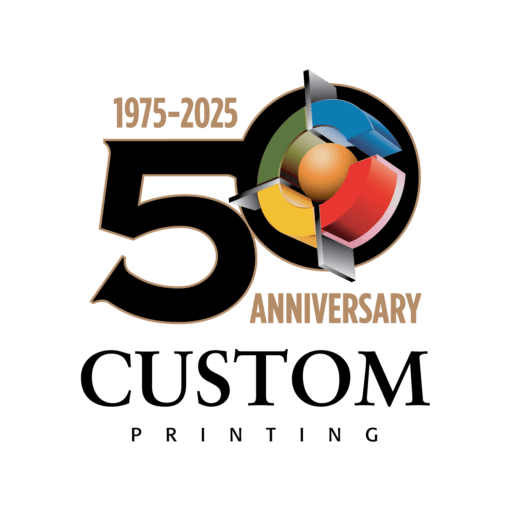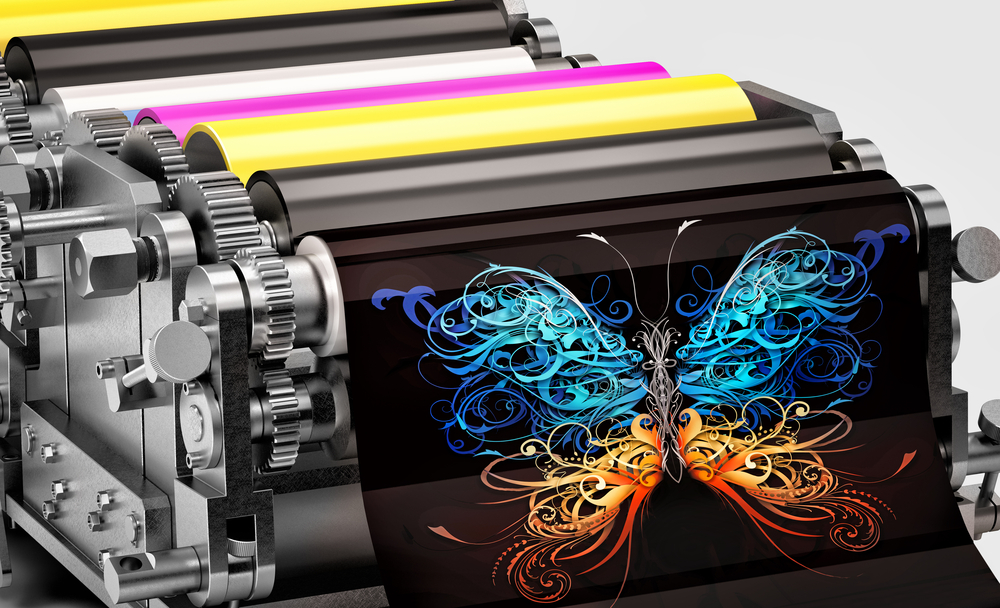When most people think of digital printing, they actually think about digital publishing. Digital printing has many of the same advantages as digital publishing, but rather than creating a website or social media post, digital printing actually creates a physical product. This can be packaging for a manufactured or food product or the actual product sold to customers.
With digital printing, it’s possible to design every feature of your product or packaging without ever having to use paper, plastic, ink, or other materials. Actual printing occurs on modern machines that are designed to use as little material and energy as possible. That means a lot less waste for the manufacturer. A precise amount of product can be made, and printing can even be done on demand, reducing the need to store or discard the extra product. Finally, digital printing allows manufacturers to make changes to their products as often as they like. This allows companies to release special edition packaging, comply with new laws and regulations, and follow new marketing trends without having to worry about creating a lot of wasted products.
Of course, there are several other ways that digital printing can help the environment. These are just a few examples:
Digital Printing Reduces Production Waste
One of the primary advantages of digital printing is waste reduction. Using updated technology means that there is no longer any need for an excessive amount of waste.
Traditional printing methods typically required a custom-made plate that would typically only last for a few thousand prints before it would be discarded and re-made. Very large print jobs could go through hundreds of these plates. These plates were usually made of metals or other materials that made them extremely difficult to reuse, and coated in toxic inks didn’t make them easy to recycle. Furthermore, it was not at all uncommon for several test prints to be made with each one of those plates to ensure that the ink and placement were correct. For large runs, this could mean that thousands of test prints would be thrown away.
The result was a considerable amount of waste. Digital printing, however, functions a lot more like the home or office printers that most people are familiar with. There is no need to create plates or run multiple test pages. Instead, all editing can be done on a computer, and the first print that comes off the press is of similar quality as the last print.
Digital Printing Can Reduce Emissions
Traditional printing tends to use more energy than digital printing, but the process itself is a lot more energy intensive. Traditional printing requires more floor space for the printing presses, requiring larger buildings that have to be heated and cooled. Traditional presses tend to give off more waste heat than digital printers as well. This heat is released into the building, where it eventually makes its way into the outside environment.
Digital printers are a newer technology that uses a lot less energy than traditional printing. The printers require less storage space and tend to give off less waste heat than traditional printers as well. Furthermore, the fact that they don’t need to have plates replaced means that emissions involved with the production and shipping of those plates are completely eliminated.
Digital Printing Reduces Inventory Storage And Waste
Traditional printing was great for taking a single design and producing it thousands or even millions of times. As soon as something had to change with that design, however, problems started. It was usually impossible to guess how many prints of the old design were actually needed, so most times, the additional product was printed with the old design.
Items that had already been printed with the old design had to be stored at a cost to the manufacturer and the environment. Because of this, the product was then sold at a discount or donated to a charity. In some cases, the product would have to be taken directly to a landfill. Businesses could lose millions of dollars in wasted products because of misprinted boxes or other outdated packaging.
Digital printing, however, allows a company to stop production immediately if something about a package needs to change. Printing can even be done to order; a precise number of products can be made as orders come in. Packaging can be changed to match a holiday season, and then printing can resume its “normal” design as soon as orders for that season stop coming in.
The result is that a lot less excess product is created. Not only does that reduce a manufacturer’s environmental footprint, but it can also save a company a lot of money in overage, storage, and transportation costs.
Digital Printing Can Utilize Eco-Friendly Flexible Packaging Materials
Many of the materials involved in digital printing are sustainable. Recycled materials, or just about any other material you can imagine is able to be printed on digitally. This can give a manufacturer a lot of options when it comes to product design and packaging. It’s possible to switch out materials to line up with market availability or produce multiple types of packaging to increase sustainability in different climates or geographic areas. In fact, several companies use this option to source the most cost-effective materials or choose materials that line up with the company’s sustainability goals.
Furthermore, the type of ink used in the printing process can be sustainable. There are multiple choices when it comes to ink, including inks that are compostable, carbon neutral, and adan inks that do not contain heavy metals or other environmental contaminants. Together, using the correct ink and material can make a product much more sustainable but also safer and more cost-effective for the consumer and the manufacturer.


